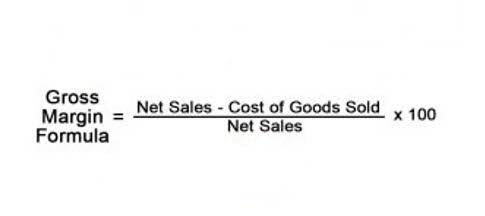
It helps stakeholders assess the long-term viability and potential of an enterprise by focusing on its most reliable revenue sources. Regardless of your exit strategy, understanding annual recurring revenue, its components, and its trends can give you powerful insights into running a successful SaaS business. It is an indicator of your company’s current health, as well as a glimpse into its future potential. Plus, it can help you verify that your business model is working and reveal shortcomings that need to be addressed, such as areas of high customer churn. Finally, analyzing ARR can help you set realistic and measurable goals to keep your organization on the path to profitable growth. ARR goes beyond traditional revenue metrics by focusing on the recurring nature of subscription-based income.
- For example, if a company expects to receive $3,000 in recurring revenue per quarter, their ARR would be $12,000 (3,000 x 4).
- So they take advantage of new year’s day, and offer a significant discount.
- Tabs’s end-to-end services can streamline your financial processes, freeing up resources for customer retention.
- Total revenue encompasses all income streams, from one-time sales and professional services to recurring subscriptions.
- Visualizations are a vital part of using metrics, as a way of quickly tracking change in them over time.
- Cross-selling new products to existing accounts and annual price increases are other strategies.
How do you calculate ARR growth rate?

This has allowed them to invest in new features and services, as well as expand their customer base. A recurring revenue model is a great way to build a reliable revenue stream and build long-term relationships with your customers. But before you commit, be sure to go over every aspect of your business to make sure it’s compatible with a recurring revenue model.
Other BIWS Courses Include:
MRR can give you an excellent view of revenue changes across a few months, meaning that you can track subscription changes accurately and identify issues fast. Churn ARR is similar to contraction but measures the recurring revenue lost from customers who cancel their contracts altogether. Sometimes, churn is hard to control, such as when customers go out of business or are acquired by larger companies. In other cases, churn is caused by a poor product experience, incomplete functionality, or price increases. ARR is one of the key metrics considered when planning an initial public offering (IPO). SaaS and cloud companies have gone public over the past 10 years with a wide range of ARR ranges.

What’s the difference between ARR and MRR?

This stability allows businesses to forecast future earnings with greater confidence and make informed decisions about resource allocation and investment. Unlike one-time purchases or project-based fees, ARR reflects an ongoing annual recurring revenue relationship with the customer, implying a higher level of revenue assurance over time. For instance, a customer signing a multi-year contract for $12,000 would contribute $6,000 to ARR annually if it spans two years, or $4,000 if it spans three years. Annual recurring revenue (ARR) is a key metric used to measure the recurring revenue a company expects to generate annually from its customers. It is especially important for subscription-based businesses like in the Software-as-a-Service (SaaS) industry. ARR represents the stable, recurring portion of revenue from customer contracts.
Distinguishing ARR from Similar Terms
- Fees that are charged only once, such as setup fees, onboarding fees, or any other non-recurring charges.
- It’s important to note that revenue from product upgrades and add-ons are taken into account here, along with revenue lost from downgrades.
- Of course, these upgrades and add-ons can’t be on a monthly basis — for them to factor in ARR, the customer must commit to them for the duration of the annual contract.
- With that in mind, let’s talk about annual recurring revenue, including what it is and why it is essential for your business.
- Since we now have all the necessary inputs for our annual recurring revenue (ARR) roll-forward schedule, we can calculate the new net ARR for both months.
- Cumulative ARR is total recurring revenue over multiple years (rather than the next twelve months).
ARR represents the normalized yearly value of your recurring revenue streams. Instead, it focuses on the predictable income you receive from subscriptions. This provides a clear and consistent view of your revenue performance, making it easier to track progress and identify trends. Strategic ARR tracking proves indispensable for subscription businesses competing in dynamic markets.

If possible, implement dynamic pricing plans based on usage or value-based pricing that reflects the specific benefits received by each customer. The software-as-a service (SaaS) market is worth about $3 trillion and could reach $10 trillion by 2030 McKinsey estimates. With growth projections at extraordinary levels, getting your pricing strategy right is even… Considered the cream of the crop when it comes to revenue models, recurring revenue is a trend that is gaining a foothold across a wide variety of industries. The various components of the ARR model provides the ability to determine and track which customer segments provide the most revenue, and which ones provide the least.
How SaaS Companies Calculate Net Revenue Retention
These inclusions reflect the core value proposition of a recurring revenue business, providing a clear picture of the recording transactions revenue generated through continuous customer engagement. Any changes that increase a customer’s annual subscription price, such as upgrades or add-ons, are also factored into ARR. ARR focuses specifically on subscription-based revenue and provides insight into the predictability and sustainability of a subscription business model.

Impact in the business
- By the end of the 12-month period, the deferred revenue balance would fall to zero, while total revenue would equal $120,000.
- It’s also an indicator of future growth because it represents your ability to deliver long-term value to your customers, which helps to generate more revenue without adding to your CAC.
- This metric demonstrates PayPal’s steady revenue stream and its ability to attract and retain customers in the competitive fintech landscape.
- Stay ahead with the latest in sales comp, revenue trends, insider tips, and must-know strategies—delivered right to your inbox.
- Avoid these frequent mistakes to maintain accurate recurring revenue analysis.
- Tracking ARR over time allows you to identify trends and assess the effectiveness of your sales and marketing strategies.
In today’s technology-centric business landscape, the ability to streamline your operations, like invoicing and payment processing, is critical to success. That’s why if you want to cultivate a strong ARR, you need an efficient and reliable billing system. For a more in-depth analysis of SaaS metrics, have a look at our detailed guide to the most important SaaS marketing metrics. However, CARR for the month of March would be $12,000, since it’s contractually secured. As an example, suppose you signed a $12,000/year contract in March that starts billing in July.
ARR provides a clear picture of a Oil And Gas Accounting company’s financial performance over time. Consistent growth in ARR indicates a healthy and sustainable business model. ARR is a key factor in determining the valuation of a subscription-based business. Investors and potential acquirers often use ARR as a metric to assess the health and potential growth of a company.
How to improve ARR
The only difference between the two is the amount of time being used to normalize them. When you opt to use ARR, you get a long-term view of your company’s progress that can be used by investors to determine if they want to be a part of your company. For management, ARR can be utilized to assess long-term business strategies and the financial well-being of your company. Calculating ARR involves adding up the value of your annual subscriptions, including recurring add-ons or upgrades, and subtracting any lost revenue from cancellations or downgrades. Be careful not to confuse ARR with cash flow, which includes all cash transactions.

